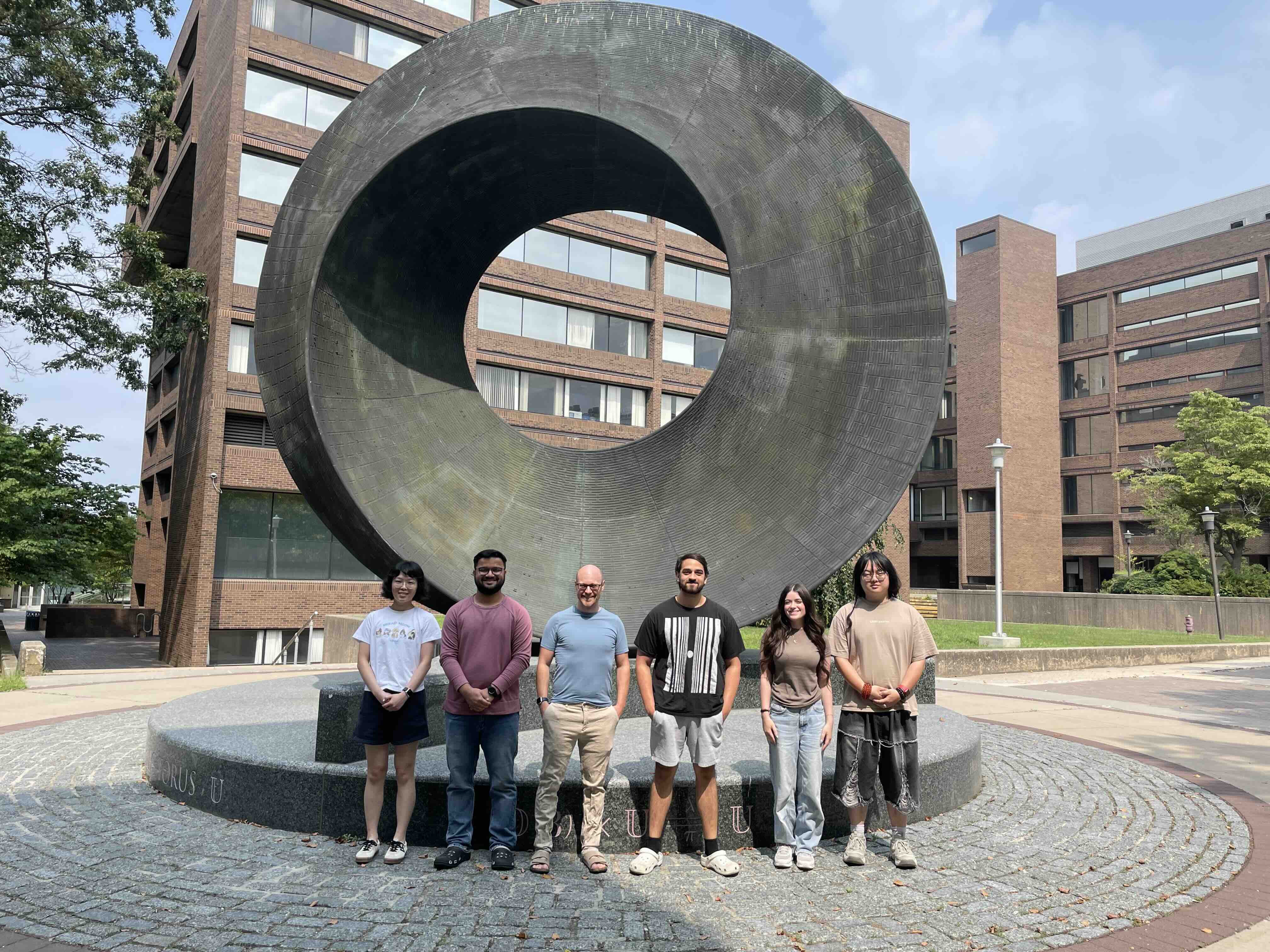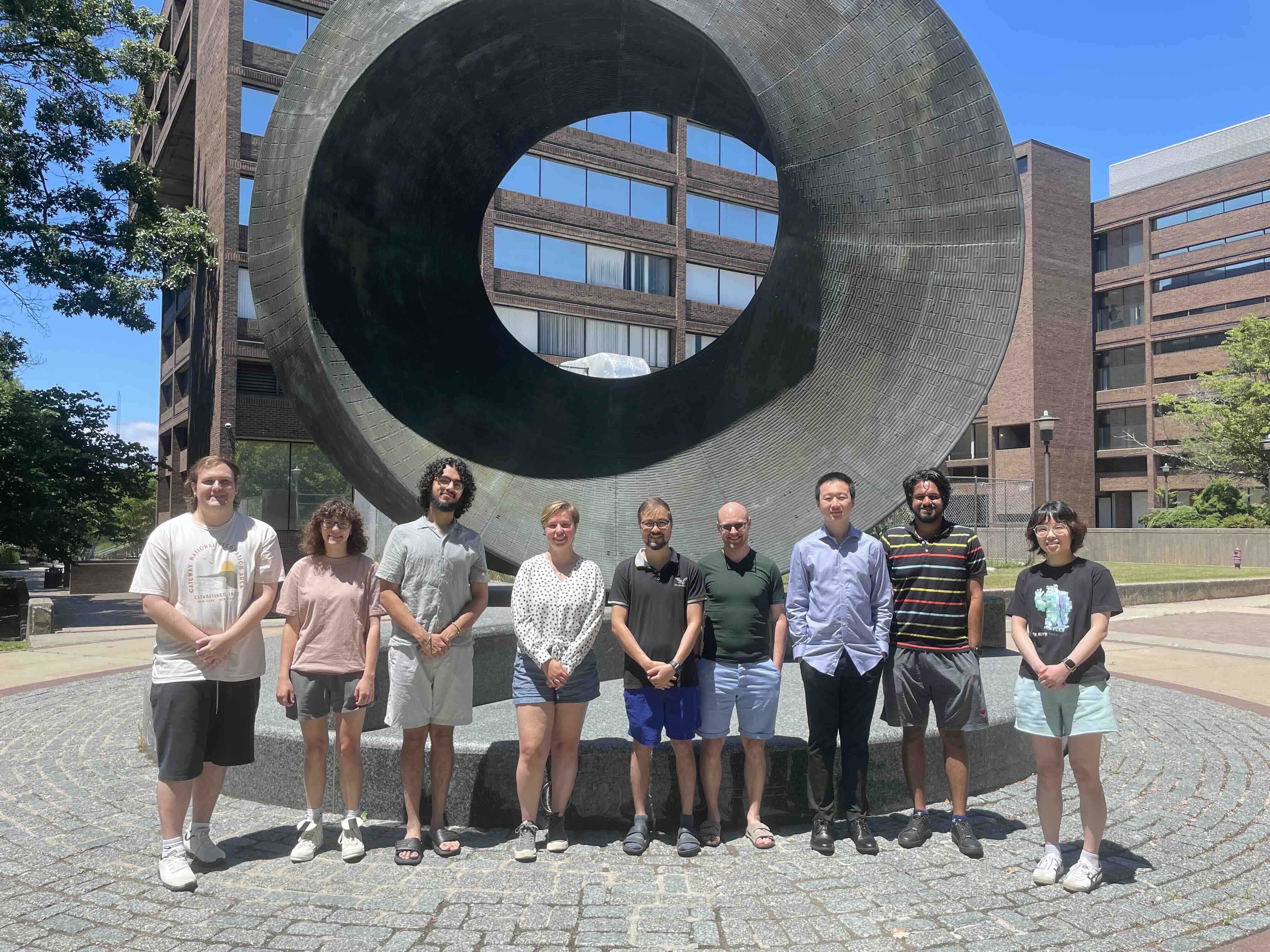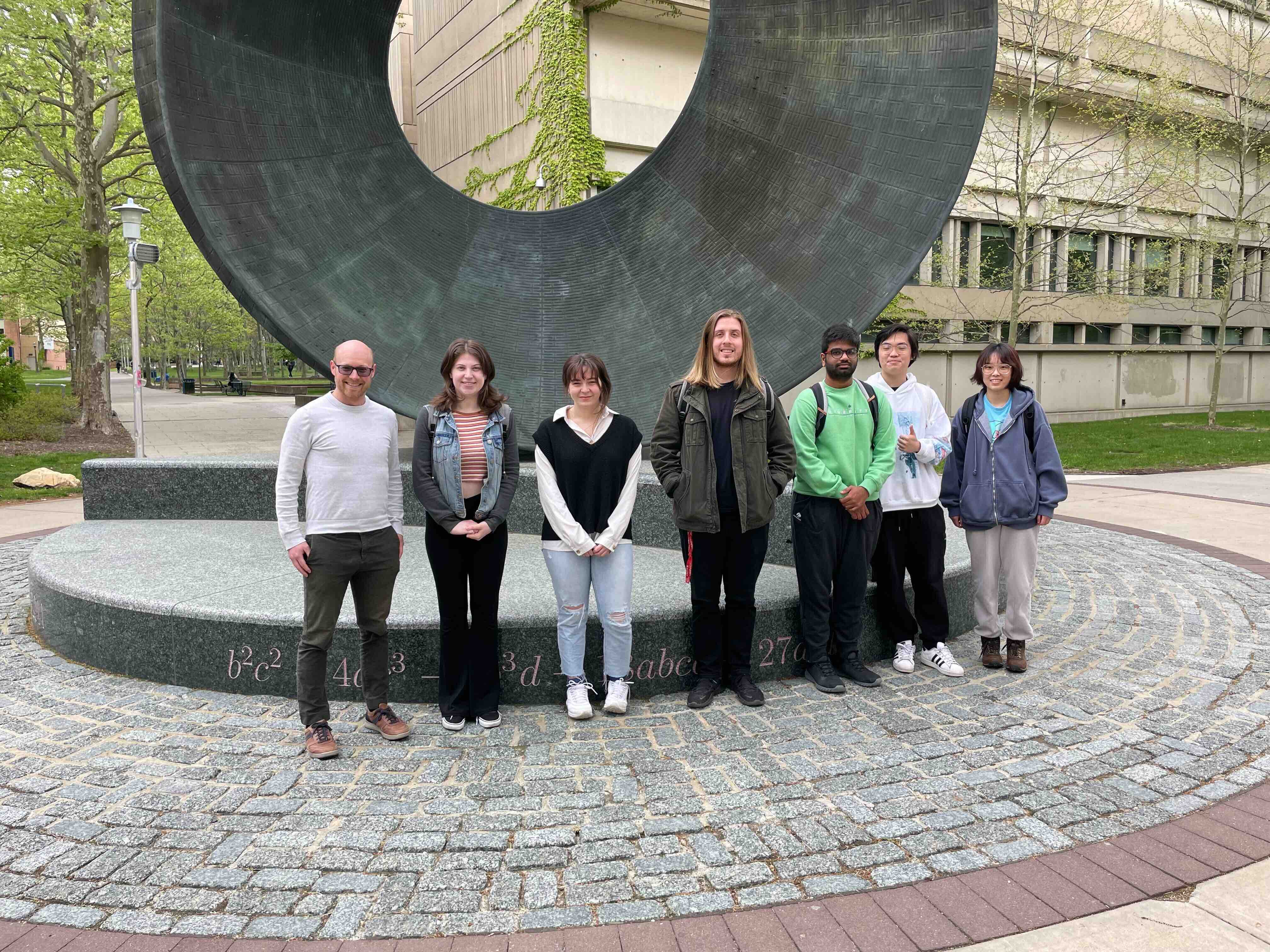Birrer Research Group
Our Group
Our research group at Stony Brook University (SBU) is seeking to answer fundamental questions in physics with cosmological and astrophysical observations.
 SBU Strong Lensing research group (Summer '25).
SBU Strong Lensing research group (Summer '25).Group members
- Xiangyu Huang, 2023 -, PhD student, Stony Brook
- Alan Huang, 2024 -, PhD student, Stony Brook
- Paras Sharma, 2025 -, PhD student, Stony Brook
- Jonathan Tekverk, 2025 -, PhD student (joint with Rouven Essig), Stony Brook
- Yixuan (Ferro) Shao , 2025 -, masters student, Stony Brook
- Ryan Brady, 2024 -, undergraduate+masters student, Stony Brook
- Sofia Castillo, 2025 -, undergraduate student, Stony Brook
SBU Strong Lensing Research Group Alumni
Postdoc Alumni
- Narayan Khadka, 2023 - 2025, Postdoc, Stony Brook, now LSST Observation Specialist, SLAC
PhD Alumni
Masters Alumni
- Jocelyn McMahon , 2024 - 2025, masters student, Stony Brook
- Rahul Karthik, 2023 - 2025, masters student, Stony Brook
- Alex Landry, 2024, masters student, Stony Brook
- Caitlin Cassini, 2023 -, masters student, Stony Brook
Undergraduate Alumni
- Mia LaMontagne, 2025, REU undergraduate student, Stony Brook
- Emrecan Sonmez, Summer 2023, 2024 URECA program, undergraduate student, Stony Brook
- Xianzhe Tang, 2023 - 2024, undergraduate student (-> graduate student at Boston University), Stony Brook
- Sameer Singh, Summer 2023, 2024 URECA program, undergraduate student, Stony Brook
- Carly Mistick, Summer 2024 REU program, undergraduate student, Stony Brook
- Jonathan Benz, 2023, undergraduate student, Stony Brook (-> graduate student at RIT)
- Jessica Jung, 2022, undergraduate student, Stony Brook
- Shauna Sheppard, Summer 2023 REU program, undergraduate student, Stony Brook
- Saketh Bhattiprolu, 2023, undergraduate student, Stony Brook
- Ethan Franco, 2023, undergraduate student, Stony Brook
- Maytal Cooper, 2023, undergraduate student, Stony Brook
- Ronan Malga, 2023, undergraduate student, Stony Brook
Join us!
If you are interested in a postdoctoral fellowship with my group, please email me directly.
If you are a current/incoming SBU graduate student interested in doing a rotation, email me.
If you are a prospective SBU graduate student, please apply through the SBU Physics and Astronomy Department.
I am excited to work with several SBU undergraduates during the semester or in summer. If you are a SBU undergraduate or master interested in doing research with the group, email me to ask about possibilities. Please include information about your past research experience, what year you are, and some information about your computing skills (there are no requirements to start a research project in our group! This is primarily to find a matching project).
For a project during the semester you should be willing to commit at least three hours per week on the project and meet with the group biweekly. For summer research, there is also the URECA program available. More summer research opportunities are listed on the SBU Astronomy website.
I am not currently taking on any non-SBU students outside these programs.
What to expect?
I am committed to be a mentor for group members. Shared expectations for mentorship and goals are important for a successful mentee - mentor relationship.
- SBU Grad school mentoring plan: At the start of working in the SBU Strong Lensing group, the member and group leader will fill out this form to set the mentorship expectations between the Group leader and member.
- Individual Development Plan (IDP): At the start of every year in the SBU Strong Lensing group, the member and group leader will fill out this form to set the goals and plans for how to achieve these goals between the Group leader and member.
 SBU Strong Lensing research group (Summer '24).
SBU Strong Lensing research group (Summer '24). SBU Strong Lensing research group (Spring '23).
SBU Strong Lensing research group (Spring '23).Working in collaborations
Research in Cosmology and Astrophysics is a collaborative endeavor. Our group is actively involved in the following collaborations:
- LSST-SLSC: LSST Strong Lensing Science Collaboration. I am the co-chair of the collaboration and I am involved in the commissioning of the Vera C. Rubin Observatory, and a co-developer of the strong lensing science analysis infrastructure.
- LSST-DESC: LSST Dark Energy Science Collaboration. I served as the strong lensing topical team convener (2023) and I am currently a member of the Collaboration Council.
- TDCOSMO: Collaboration to measure the expansion rate of the universe with strong lensing time-delay cosmography (merged from H0LiCOW, STRIDES, SHARP, COSMOGRAIL). I am the lead author of the latest analysis adn co-supervise several students heavily involved in this project.
- Dark Energy Survey: A wide field photometric survey to map hundreds of millions of galaxies, detect thousands of supernovae, and find patterns of cosmic structure to probe dark energy. I served as a co-convener of the Strong Lensing working group and a science committee member (2018-2023). I got data rights access for an equivalent year of infrastructure work.
- STRIDES: Is an external collaboration of the Dark Energy Survey, primarily aimed at finding ~100 gravitationally lensed quasars in the Dark Energy Survey. I am a co-PI and actively contribute to the modelling of candidate systems and co-lead the analysis to measure the Hubble constant from one of the discovered lenses.
- Deep Skies Lab: A community that fosters knowledge transfer for the accelerated application of artificial intelligence to astronomical challenges. I am a member and provide simulation tools and pipelines to provide to the broader AI community to explore the potential for AI applications in the field of cosmology and strong lensing in particular.
- Keck All-Sky Precision Adaptive Optics (KAPA): A next generation adaptive optics setup for the 8-m W. M. Keck telescope on Maunakea, Hawaii. I am a science team member.
- Hyper Suprime-Cam Survey: Large survey program with the 10-m Subaru telescope on Manakea. I am an external collaborator participating in the galaxy morphology and quasar-host galaxy projects.
- SkyPy project: Open source software development project to forward model the sky. I am a development team member.
- LensWatch: A loose collaboration of groups searching for lensed SNe with targeted surveys of known strong-lensing systems.
- H0LiCOW: Collaboration to measure the expansion rate of the universe with strong lensing time-delay cosmography. Since 2017 I am a member of the H0LiCOW collaboration. I took the lead in modelling a quasar lens to measure the Hubble constant.